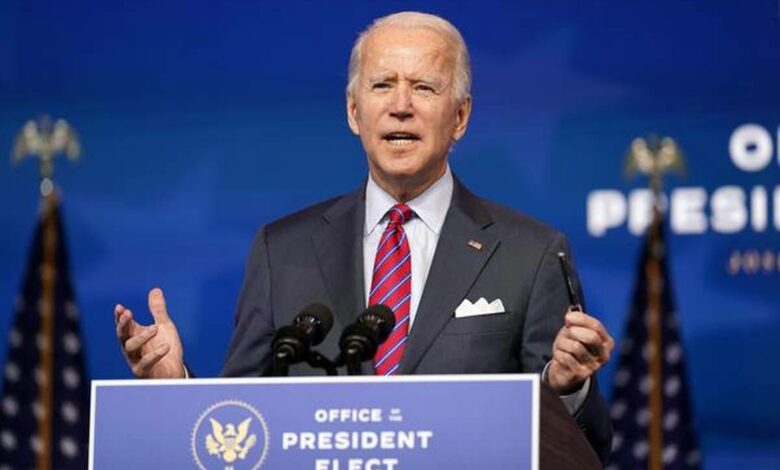Joe Biden’s $1.9 Trillion economic stimulus package attracts eyes globally

The COVID-19 pandemic forced economies into an economic slowdown and there has been the introduction of various policies to stand up since. However, for some economies, the slowdown converted into a recession while some were able to get back afloat. In the face of a spiralling health crisis in The United States of America, President-elect Joe Biden and the Democrats have introduced a USD 1.9 Trillion economic stimulus package to achieve the latter.
Joe Biden, in accordance with suggestions from his economists, outlined the intricacies of the stimulus package with respect to increasing unemployment rates and COVID-19 deaths, claiming there is no time left to waste anymore. In his speech that took place later this Thursday, Joe Biden said the situation requires the action to be taken right now and that’s what he’s doing with the early announcement of the economic stimulus package.
Referring to the package as ‘America’s rescue package’, Joe Biden stressed upon the need of lawmakers to come together and make an impact. The package in question has plans relating to areas including the coronavirus vaccination’s production and distribution, safely reopening schools and intensified unemployment benefits. It also includes proportion to be spent on strengthening state and city’s fiscal budgets, which took a hit due to the pandemic.
Beyond this initial stimulus to drive out the economy of a slowdown in the short run, the party’s long-run economic policies aim at targeting sectors like education, infrastructure, clean energy and healthcare. Here are some of the major highlights from the $1.9 Trillion economic stimulus package-
The top priority slot in Biden’s economic stimulus package is taken by the relief measures for COVID-19. This includes a stimulus in production and distribution for the vaccine against the virus through a community health jobs program, offering more than 100,000 people opportunities in areas of vaccine outreach, contract tracing and risk mandates. This works as a dual policy action in terms of healthcare and employment and if implemented well, it could be worth the $20 billion invested.
For those hit hardest by the pandemic, as promised in his senate elections, Biden’s economic aid includes $2000 stimulus checks to be delivered directly to the needy to help them recover from losses and rise to the basic necessity level. Incorporation of high-income groups in the section is still to be configured.
The pandemic has resulted in an increase in unemployment rates and thus, more bargaining power at the employer’s end. To help put job seekers in a fairer position, Biden has proposed to increase the federal minimum wage to $15 per hour. However, as appealing as this may seem, businesses running low on profits during the pandemic might get reluctant to offer jobs at worse or lay down existing workers at worst. Unemployment benefits, that stood at $300 before the stimulus, is said to double by the end of September. An honest perspective of twice as much unemployment benefits implies that it increases the reservation wage and thus the indifferent level of income between working and not working. So even though it might help relieve people in the short run, long-run macroeconomic effects are dampening. Nevertheless, it would help people not exhaust their savings in the short run which is a good sign for the long run. How things would turn out is yet to be witnessed.
Guaranteeing relief to all qualifying small businesses, Biden proposed adding a $30 Billion small business opportunity fund to invest in businesses and entrepreneurial ventures in the new economic stimulus package.
The policy of deferred student loan payments undertaken during the Trump administration that was valid up to January would now be extended under the new stimulus package, as mentioned by President-elect Joe Biden. This means that thousands of Americans continuing studies with student loans would be withheld from making interest and loan repayments for now. Along with that, Biden has proposed to waive off $10,000 from every American’s student loan, forgiving most or all of the loan payments as a relief measure to COVID-19 pandemic.
The very interesting corporate tax policy of Biden is definitely worth discussing. Biden administration is said to increase the corporate tax rate to 28% from 21% for families with Aggregate gross income more than $400.000 a year, which means the top 1.5% of the high-income earning population. Even though the policy claims to keep corporate tax the same for families with aggregate gross income less than 400,000 per year, the indirect effect of the tax policy would result in lower investment returns and lower wages for low-income families. Nevertheless, more than 80% increase in tax revenue for the democratic government would come from the richest 1% of the income distribution. This means that the burden of increased deficit for reviving the economy doesn’t fall much on the low and middle-income groups, which is quite contrary to what we usually witness, especially in a country like India.
Biden also proposed tax cuts and credits for low and middle-income groups, including the tax credit for childcare, renters and first-time home buyers. Tax credit acts as an incentive in housing and rental industries and can boost the respective sectors. The childcare tax credit would total $8,000 per family for one child or $16,000 for two or more children.
In terms of the information available right now, it can be said the economic stimulus package that intends to give a boost to the otherwise slowed economy in the short run with an immediate effect can be seen accomplishing its goal if the timely and efficient implementation is undertaken. The medium-run effects of these policies are more dependent on the duration of these policies and consistency, which if continued, could bring in uncertain results for the labour market, as witnessed in the Obama-led democratic party in 2008 which greatly under-predicted unemployment. As for the fiscal deficit, financing of the deficit is designed in a way that the lower-income groups are less burdened which promises stable savings and thus, growth in the economy.




